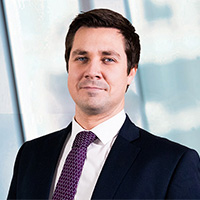If a picture says a thousand words, the pictures of any one of the stunning stadiums, arenas and complexes showcased and discussed at the Summit speaks to a similarly abundant amount of disciplines and specialisms that contribute to bringing them from their conceptual birth into reality. All this is in the context of the dynamic and ever-changing technological environment they are born into. Not only are stadiums required to be cutting edge at launch, but they must also allow scope for future innovation in the long term, and versatility/flexibility in the short term in order to facilitate return on investment (ROI).
ROI was a common theme of the Summit, in the context of stadium complexes needing to cater for a multitude of sports and events. This versatility is essential as it spreads the considerable financial risk associated with stadium projects. Equipping the stadium with the requisite tools and technology is a key component to this versatility. It was also common opinion at the Summit that it must be possible to "flip the venue" from one event to another, under time critical conditions, so that those operating a stadium are able to "sweat the asset". All of this must be done in a way which protects the interests of the stakeholders of any given stadium.
Regarding stakeholders, it was clear from the Summit that those of a stadium are by no means limited to financial contributors. From the 80,000 capacity Panathenaic Stadium in Athens, the venue of the first Olympic Games in modern times in 1896, through to present day Wembley Stadium for the London Olympics in 2012, stadiums serve a greater purpose, taking on a resonance as a beacon of a city or region, a symbol of local/national pride and a fertile source of economic development in urban areas. In this way, we heard it described that those operating stadiums should consider themselves to be custodians of something belonging to the public at large, rather than a piper that has to be paid in order to witness your favourite event, team or star. We heard it aptly described as "giving the locals a stadium to follow". Buy-in of the locals is becoming even more crucial in a world of social media, ESG, sustainability etc.
Whilst seemingly counter-intuitive, it is essential to invest the time throughout the life cycle of a stadium project to properly formulate and document its particulars over time, including any legal obligations, technical documents and interfaces between the many disciplines and specialisms. Interfaces should be clearly delineated and, where concurrent or overlapping, properly coordinated to ensure efficiency. The goal is to find a rising tide that raises all boats, by having the various disciplines work in harmony to meet the needs of the stakeholders. This includes the obvious collaborations one would expect in a stadium project, for example, between architects and structural engineers when designing roofing solutions, together with the more intricate relationships on discrete issues, such as where architects, structural engineers and acoustics engineers are required to collaborate to assess the impact of roof design on acoustics. All of this is equally important in the context of arrangements post-completion, for things such as maintenance and future development.
DWF celebrates 40 years in sports this year and our Team can help you with any aspect of your ongoing or upcoming stadium projects. Get in touch with one of the authors below if you need advice or would like to discuss further.















